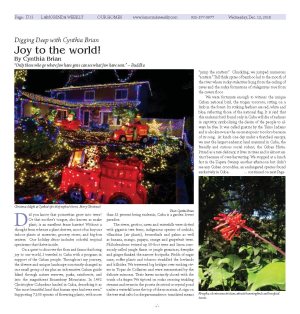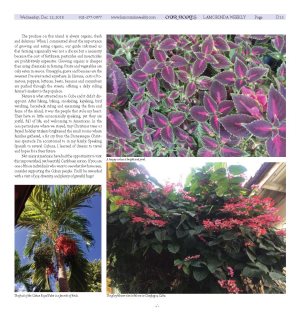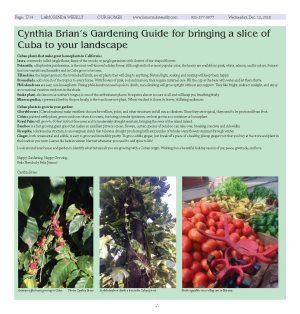|
|
Published December 12th, 2018
|
Digging Deep with Cynthia Brian
|
| Joy to the world! |
| By Cynthia Brian |
 |
| Christmas delight at Cynthia's fire chief nephew's home. Merry Christmas! Photo Cynthia Brian |
"Only those who go where few have gone can see what few have seen." ~ Buddha
 Did you know that poinsettias grow into trees? Or that mother's tongue, also known as snake plant, is an excellent fence barrier? Without a thought from whence a plant derives, most of us buy our indoor plants at nurseries, grocery stores, and big-box centers. Our holiday décor includes colorful tropical specimens that thrive inside.
Did you know that poinsettias grow into trees? Or that mother's tongue, also known as snake plant, is an excellent fence barrier? Without a thought from whence a plant derives, most of us buy our indoor plants at nurseries, grocery stores, and big-box centers. Our holiday décor includes colorful tropical specimens that thrive inside.
 On a quest to discover the flora and fauna that bring joy to our world, I traveled to Cuba with a program in support of the Cuban people. Throughout my journey, the diverse and unique landscape constantly changed as our small group of six plus an informative Cuban guide hiked through nature reserves, parks, rainforests, and into the magnificent Escambray Mountains. In 1492 Christopher Columbus landed in Cuba, describing it as "the most beautiful land that human eyes had ever seen." Supporting 7,500 species of flowering plants, with more than 53 percent being endemic, Cuba is a garden lovers paradise.
On a quest to discover the flora and fauna that bring joy to our world, I traveled to Cuba with a program in support of the Cuban people. Throughout my journey, the diverse and unique landscape constantly changed as our small group of six plus an informative Cuban guide hiked through nature reserves, parks, rainforests, and into the magnificent Escambray Mountains. In 1492 Christopher Columbus landed in Cuba, describing it as "the most beautiful land that human eyes had ever seen." Supporting 7,500 species of flowering plants, with more than 53 percent being endemic, Cuba is a garden lovers paradise.
 The rivers, grottos, caves and waterfalls were dotted with gigantic tree ferns, indigenous species of orchids, tillandsias (air plants), bromeliads and palms as well as banana, mango, papaya, orange and grapefruit trees. Philodendrons twined up 50-foot trees and Ixora commonly called jungle flame or jungle geranium, firespike and ginger flanked the narrow footpaths. Fields of sugar cane, coffee plants and tobacco straddled the lowlands and hillsides. We traversed log bridges over rushing rivers in Topas de Collantes and were mesmerized by the delicate mimosas. Their leaves instantly closed with the touch of a finger. We tiptoed on rocks crossing trickling streams and swam in the poceta de cristal or crystal pond under a waterfall near the top of the mountain. A sign on the tree read salto los desparramaderos: translated means "jump the scatters." Chuckling, we jumped numerous "scatters." Tall thick spires of bamboo led to the mouth of the river where rocky stalactites hung from the ceiling of caves and the rocky formations of stalagmites rose from the cavern floor.
The rivers, grottos, caves and waterfalls were dotted with gigantic tree ferns, indigenous species of orchids, tillandsias (air plants), bromeliads and palms as well as banana, mango, papaya, orange and grapefruit trees. Philodendrons twined up 50-foot trees and Ixora commonly called jungle flame or jungle geranium, firespike and ginger flanked the narrow footpaths. Fields of sugar cane, coffee plants and tobacco straddled the lowlands and hillsides. We traversed log bridges over rushing rivers in Topas de Collantes and were mesmerized by the delicate mimosas. Their leaves instantly closed with the touch of a finger. We tiptoed on rocks crossing trickling streams and swam in the poceta de cristal or crystal pond under a waterfall near the top of the mountain. A sign on the tree read salto los desparramaderos: translated means "jump the scatters." Chuckling, we jumped numerous "scatters." Tall thick spires of bamboo led to the mouth of the river where rocky stalactites hung from the ceiling of caves and the rocky formations of stalagmites rose from the cavern floor.
 We were fortunate enough to witness the unique Cuban national bird, the trogan tocororo, sitting on a limb in the forest. Its striking feathers are red, white and blue, reflecting those of the national flag. It is said that this endemic bird found only in Cuba will die of sadness in captivity, symbolizing the desire of the people to always be free. It was called guatini by the Taino Indians and is also known as the onomatopoeic tocoloro because of its song. At lunch one day under a thatched canopy, we met the largest endemic land mammal in Cuba, the friendly and curious social rodent, the Cuban Hutia. Prized as a rare delicacy, it lives in trees and is almost extinct because of over-harvesting. We stopped at a lunch hut in the Zapata Swamp another afternoon but didn't see any Cuban crocodiles, an endangered species found exclusively in Cuba.
We were fortunate enough to witness the unique Cuban national bird, the trogan tocororo, sitting on a limb in the forest. Its striking feathers are red, white and blue, reflecting those of the national flag. It is said that this endemic bird found only in Cuba will die of sadness in captivity, symbolizing the desire of the people to always be free. It was called guatini by the Taino Indians and is also known as the onomatopoeic tocoloro because of its song. At lunch one day under a thatched canopy, we met the largest endemic land mammal in Cuba, the friendly and curious social rodent, the Cuban Hutia. Prized as a rare delicacy, it lives in trees and is almost extinct because of over-harvesting. We stopped at a lunch hut in the Zapata Swamp another afternoon but didn't see any Cuban crocodiles, an endangered species found exclusively in Cuba.
 The produce on this island is always organic, fresh and delicious. When I commented about the importance of growing and eating organic, our guide informed us that farming organically was not a choice but a necessity because the cost of fertilizers, pesticides and insecticides are prohibitively expensive. Growing organic is cheaper than using chemicals in farming. Fruits and vegetables are only eaten in season. Pineapple, guava and bananas are the sweetest I've ever tasted anywhere. In Havana, carts of tomatoes, peppers, lettuces, beets, bananas and cucumbers are pushed through the streets, offering a daily rolling farmer's market to the populace.
The produce on this island is always organic, fresh and delicious. When I commented about the importance of growing and eating organic, our guide informed us that farming organically was not a choice but a necessity because the cost of fertilizers, pesticides and insecticides are prohibitively expensive. Growing organic is cheaper than using chemicals in farming. Fruits and vegetables are only eaten in season. Pineapple, guava and bananas are the sweetest I've ever tasted anywhere. In Havana, carts of tomatoes, peppers, lettuces, beets, bananas and cucumbers are pushed through the streets, offering a daily rolling farmer's market to the populace.
 Nature is what attracted me to Cuba and it didn't disappoint. After hiking, biking, snorkeling, kayaking, bird watching, horseback riding and examining the flora and fauna of the island, it was the people that stole my heart. They have so little economically speaking, yet they are joyful, full of life, and welcoming to Americans. In the casa particulares where we stayed, tiny Christmas trees or frayed holiday trinkets brightened the small rooms where families gathered, a far cry from the Disneyesque Christmas spectacle I'm accustomed to in my family. Speaking Spanish to several Cubans, I learned of dreams to travel and hopes for a freer future.
Nature is what attracted me to Cuba and it didn't disappoint. After hiking, biking, snorkeling, kayaking, bird watching, horseback riding and examining the flora and fauna of the island, it was the people that stole my heart. They have so little economically speaking, yet they are joyful, full of life, and welcoming to Americans. In the casa particulares where we stayed, tiny Christmas trees or frayed holiday trinkets brightened the small rooms where families gathered, a far cry from the Disneyesque Christmas spectacle I'm accustomed to in my family. Speaking Spanish to several Cubans, I learned of dreams to travel and hopes for a freer future.
 Not many Americans have had the opportunity to visit this impoverished, yet beautiful Caribbean nation. If you are one of those individuals who want to see what few have seen, consider supporting the Cuban people. You'll be rewarded with a visit of joy, diversity, and plenty of grateful hugs!
Not many Americans have had the opportunity to visit this impoverished, yet beautiful Caribbean nation. If you are one of those individuals who want to see what few have seen, consider supporting the Cuban people. You'll be rewarded with a visit of joy, diversity, and plenty of grateful hugs!
 Cynthia Brian's Gardening Guide for bringing a slice of Cuba to your landscape
Cynthia Brian's Gardening Guide for bringing a slice of Cuba to your landscape
 Cuban plants that make great houseplants in California:
Cuban plants that make great houseplants in California:
 Ixora, commonly called jungle flame, flame of the woods, or jungle geranium with clusters of star shaped flowers.
Ixora, commonly called jungle flame, flame of the woods, or jungle geranium with clusters of star shaped flowers.
 Poinsettia, a Euphorbia pulcherrima, is the most well-known holiday flower. Although red is the most popular color, the bracts are available in pink, white, salmon, and bi-colors. Poinsettias love warmth and humidity and in Cuba grow to be trees.
Poinsettia, a Euphorbia pulcherrima, is the most well-known holiday flower. Although red is the most popular color, the bracts are available in pink, white, salmon, and bi-colors. Poinsettias love warmth and humidity and in Cuba grow to be trees.
 Tillandsias, the largest genus in the bromeliad family, are air plants that will cling to anything. Natural light, soaking and misting will keep them happy.
Tillandsias, the largest genus in the bromeliad family, are air plants that will cling to anything. Natural light, soaking and misting will keep them happy.
 Bromeliads, add a touch of the tropics to every home. With flowers of pink, red and maroon, they require minimal care. Fill the cup at the base with water and let them thrive.
Bromeliads, add a touch of the tropics to every home. With flowers of pink, red and maroon, they require minimal care. Fill the cup at the base with water and let them thrive.
 Philodendrons are easy care houseplants. Vining philodendrons need a pole to climb; non-climbing will grow upright without any support. They like bright, indirect sunlight, and enjoy an occasional vacation outdoors in the shade.
Philodendrons are easy care houseplants. Vining philodendrons need a pole to climb; non-climbing will grow upright without any support. They like bright, indirect sunlight, and enjoy an occasional vacation outdoors in the shade.
 Snake plant, also known as mother's tongue, is one of the air freshener plants. It requires almost no care at all and will keep you breathing freely.
Snake plant, also known as mother's tongue, is one of the air freshener plants. It requires almost no care at all and will keep you breathing freely.
 Mimosa pudica, a perennial herb in the pea family, is the touch-me-not-plant. When touched it closes its leaves, titillating audiences.
Mimosa pudica, a perennial herb in the pea family, is the touch-me-not-plant. When touched it closes its leaves, titillating audiences.

 Cuban plants to grow in your garden:
Cuban plants to grow in your garden:
 Gloryblowers (Clerodendrum) make excellent choices for trellises, poles, and other structures in full sun as climbers. Since they are tropical, they need to be protected from frost.
Gloryblowers (Clerodendrum) make excellent choices for trellises, poles, and other structures in full sun as climbers. Since they are tropical, they need to be protected from frost.
 Coleus, painted nettle plant, grows outdoors when it is warm, but being a tender specimen, are best grown as a container or houseplant.
Coleus, painted nettle plant, grows outdoors when it is warm, but being a tender specimen, are best grown as a container or houseplant.
 Royal Palm will grow to 60 feet in frost-free areas and is moderately drought resistant, bringing the sway of the island inland.
Royal Palm will grow to 60 feet in frost-free areas and is moderately drought resistant, bringing the sway of the island inland.
 Bamboo is a fast growing giant grass that makes an excellent privacy screen. Beware, certain species of bamboo can take over, breaking concrete and sidewalks.
Bamboo is a fast growing giant grass that makes an excellent privacy screen. Beware, certain species of bamboo can take over, breaking concrete and sidewalks.
 Firespike, odontonema strictum, is an evergreen shrub that tolerates drought producing brilliant panicles of tubular waxy flowers summer through winter.
Firespike, odontonema strictum, is an evergreen shrub that tolerates drought producing brilliant panicles of tubular waxy flowers summer through winter.
 Ginger, both ornamental and edible, is easy to grow and incredibly pretty. To grow edible ginger, just break off a piece of a healthy, plump ginger root that you buy at the store and plant in the location you want. Leaves die back in winter. Harvest whenever you need to add spice to life!
Ginger, both ornamental and edible, is easy to grow and incredibly pretty. To grow edible ginger, just break off a piece of a healthy, plump ginger root that you buy at the store and plant in the location you want. Leaves die back in winter. Harvest whenever you need to add spice to life!

 Look around your house and garden to identify what botanicals you are growing with a Cuban origin. Wishing you a beautiful holiday season of joy, peace, gratitude, and love.
Look around your house and garden to identify what botanicals you are growing with a Cuban origin. Wishing you a beautiful holiday season of joy, peace, gratitude, and love.

 Happy Gardening. Happy Growing.
Happy Gardening. Happy Growing.
 Feliz Navidad y Feliz Junuca!
Feliz Navidad y Feliz Junuca!

 Cynthia Brian
Cynthia Brian


|
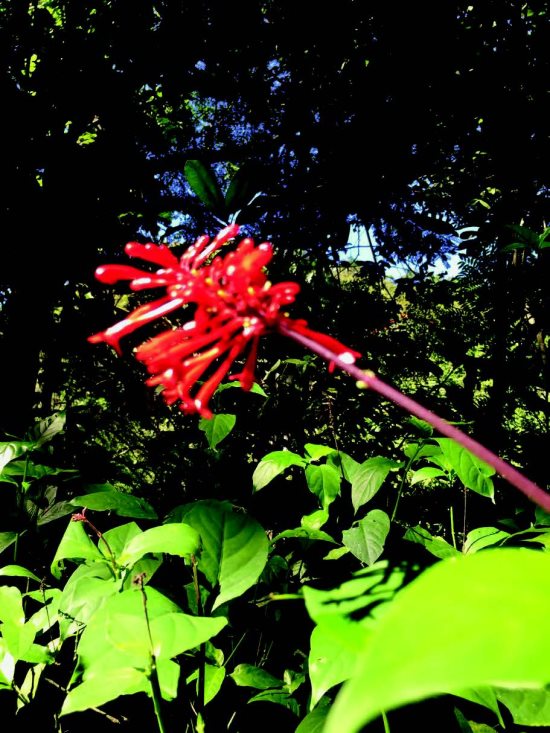 |
| Firespike, odontonema strictum, attracts hummingbirds and beneficial insects. |
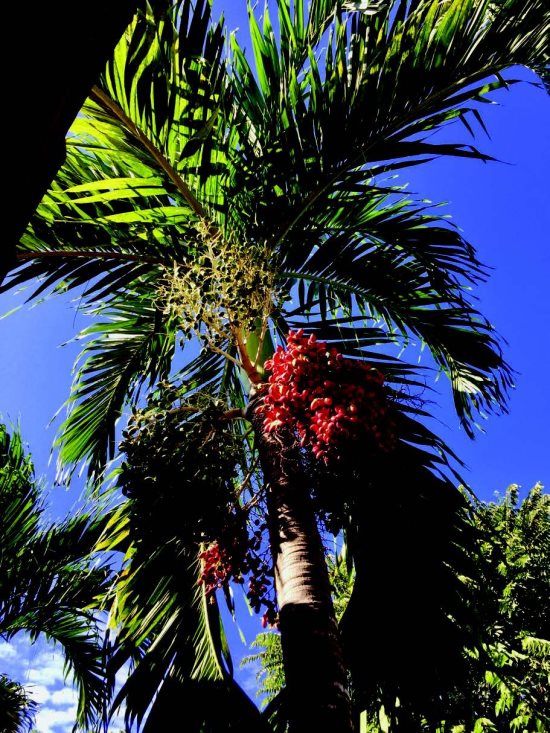 |
| The fruit of the Cuban Royal Palm is a favorite of birds. |
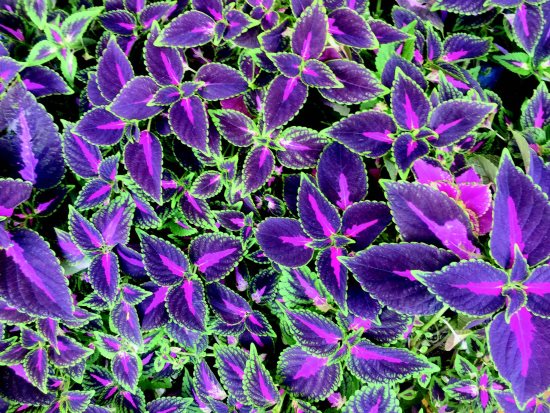 |
| A happy coleus is bright and pink. |
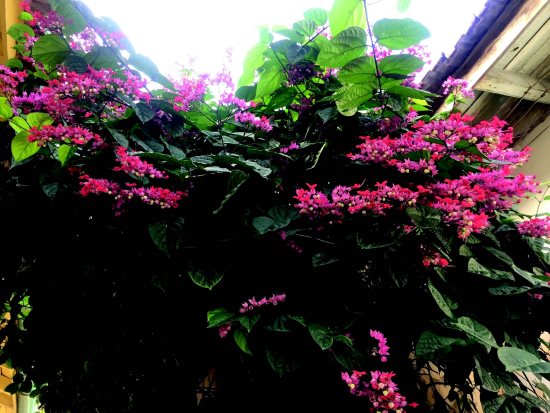 |
| The gloryblower vine in bloom in Cienfuegos, Cuba. |
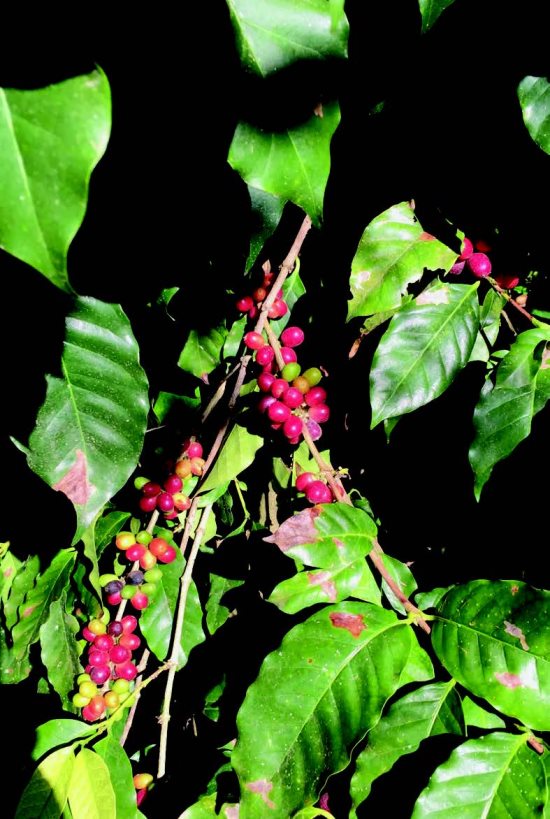 |
| Arabian coffee beans growing in Cuba.
Photos Cynthia Brian |
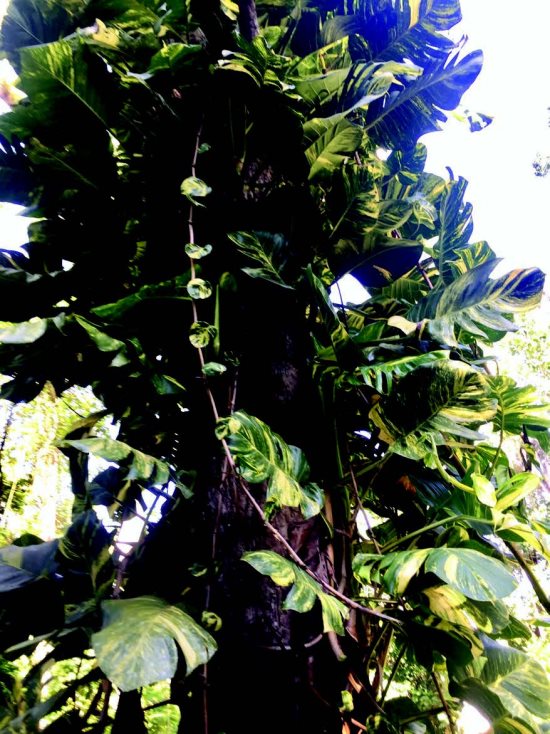 |
| A philodendron
climbs a tree in the Cuban forest. |
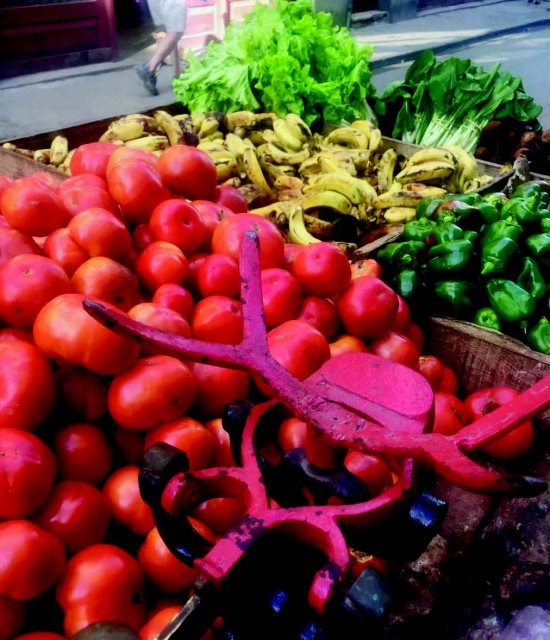 |
| Fresh vegetables
on a rolling cart in Havana. |
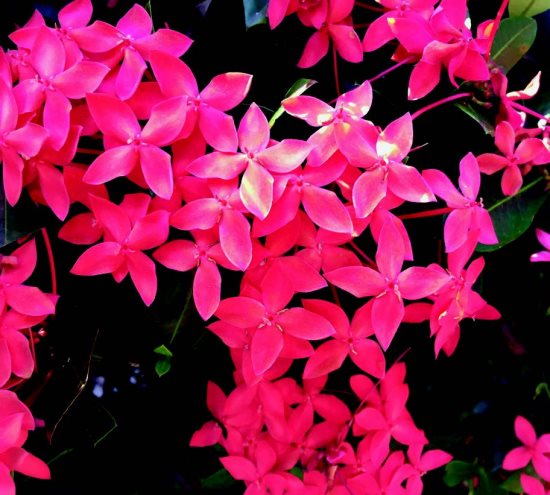 |
| Ixora, scarlet jungle flame grows
throughout the rain forests. |
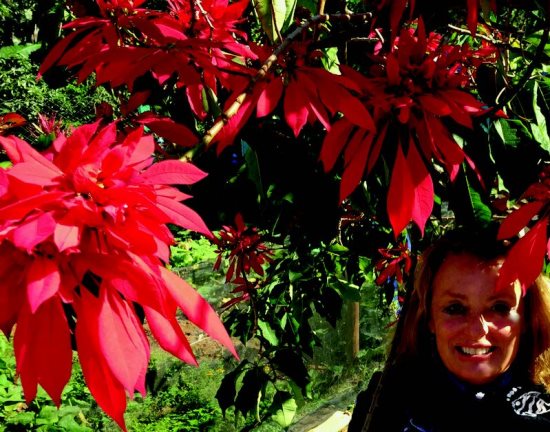 |
| Cynthia
Brian shaded by a poinsettia tree in full bloom Cynthia Brian, The
Goddess Gardener, raised in the vineyards of Napa County, is a New
York Times best-selling author, actor, radio personality, speaker,
media and writing coach as well as the Founder and Executive Director
of Be the Star You Are1(r) 501 c3. Tune into Cynthia's Radio show and
order her books at
www.StarStyleRadio.com. Buy a copy of her new books, Growing with
the Goddess Gardener and Be the Star You Are! Millennials to Boomers
at
www.cynthiabrian.com/online-store. Hire Cynthia for projects,
consults, and lectures.
Cynthia@GoddessGardener.com
www.GoddessGardener.com
Donate to Fire Disaster Relief via Be the Star You Are!(r) 501 c3 at
www.BethestarYouAre.org |
|
|
|












